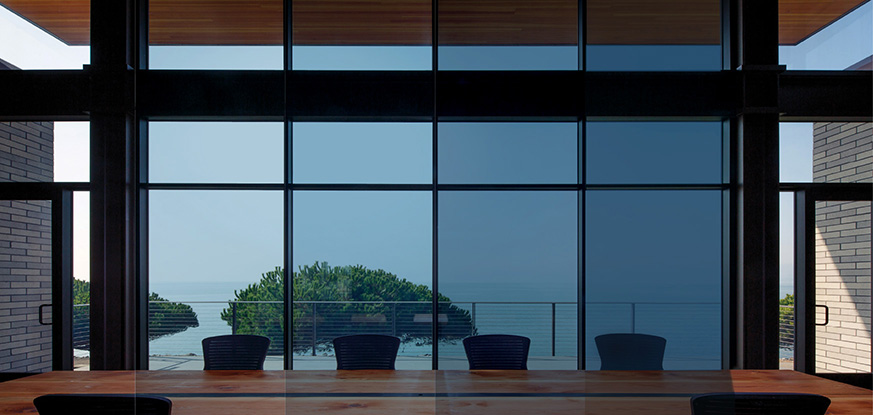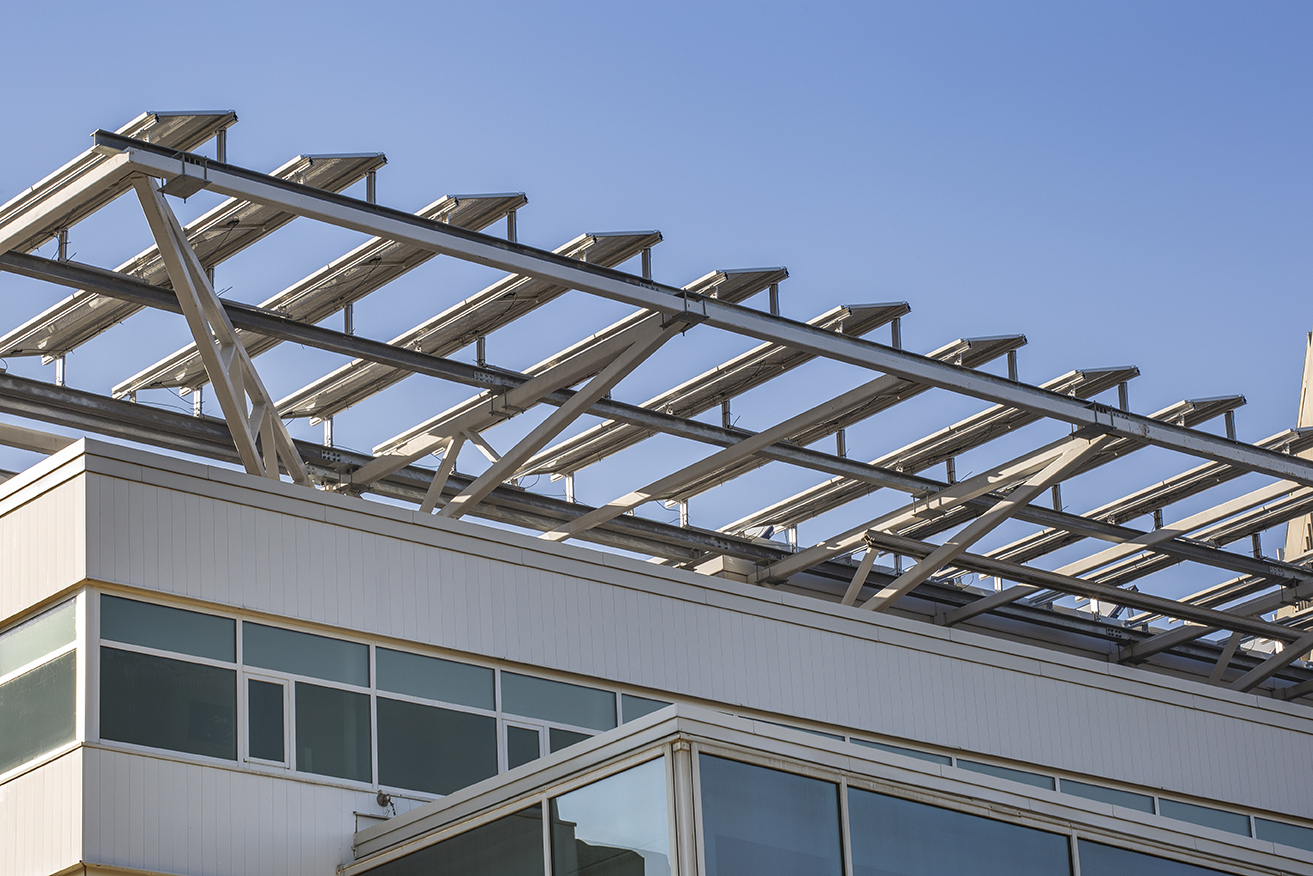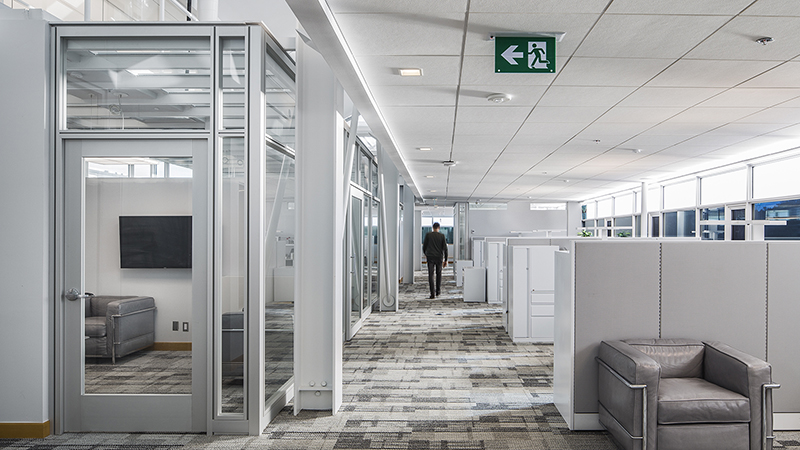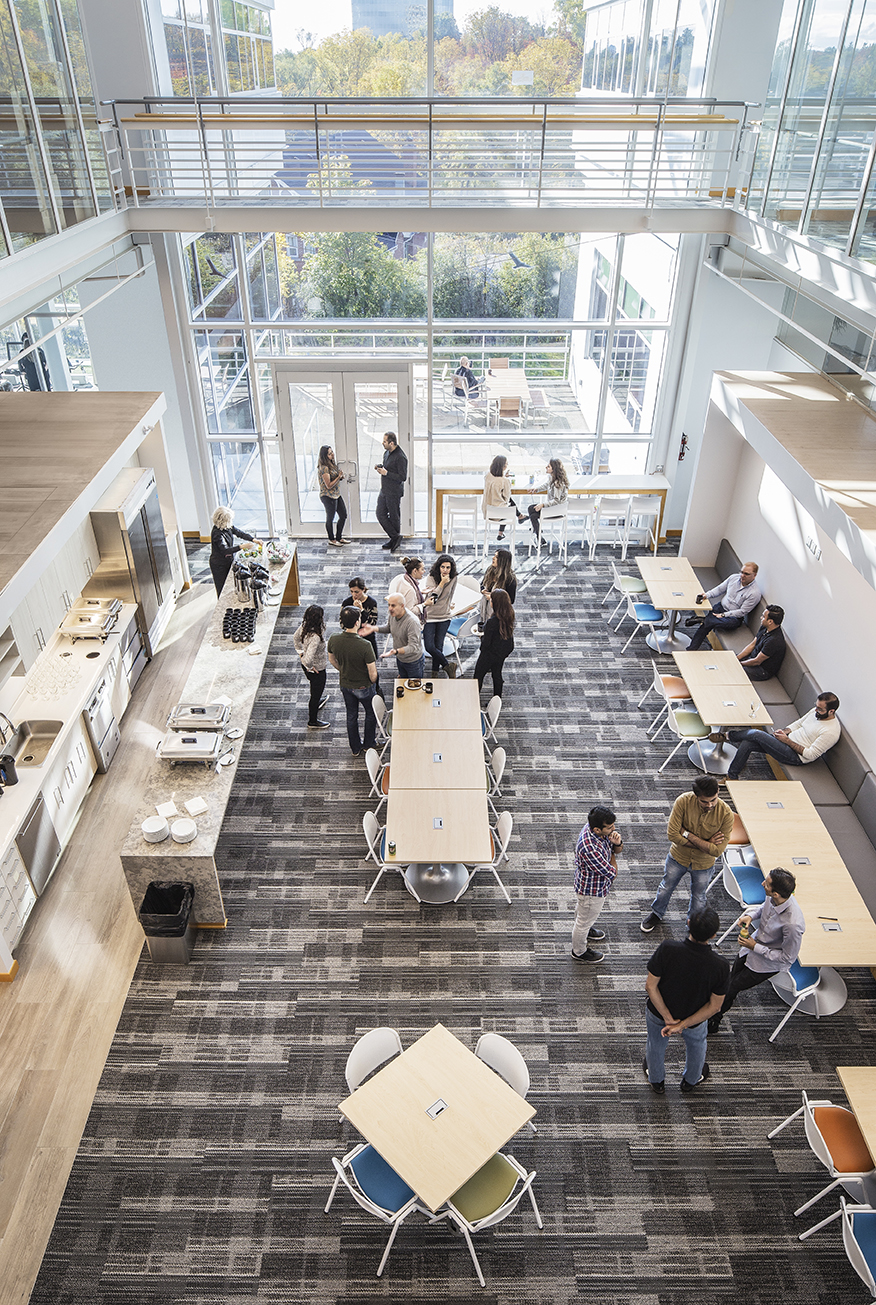By some estimates, the urban built environment contributes a staggering 75% to global greenhouse gas emissions each year, with buildings accounting for nearly 40%. The OAA remains acutely aware of how the built environment—and those who design, construct, and operate buildings—impact climate change. As the regulator of the profession in the province, the OAA wanted to demonstrate first-hand how existing buildings can be successfully adapted to minimize environmental impacts and support a sustainable future. Mandated to protect the public interest, the Association advocates the pressing need for Ontario’s architecture profession to move swiftly toward climate stability.
A Refreshed Headquarters
Located in Toronto’s Don Mills neighbourhood, the award-winning OAA Headquarters (HQ) at 111 Moatfield Drive is more than offices and meetings spaces—it is also the public and physical embodiment of an architect's skill and aspirations. In embarking on the Renew + Refresh renovation project, it was crucial to be respectful and sensitive to the original structure, which opened in 1992 and was designed by Toronto architect Ruth Cawker, winner of a province-wide design competition.
Under the guidance of OAA Council and, in particular, the OAA Building Committee led by architect Sheena Sharp, both operating energy (the energy needed to run buildings) and embodied energy (the sum impact of all greenhouse gas emissions attributed to a material during its life cycle) guided collaborative decision-making with members of the project team, to ensure the building’s life cycle performance would be environmentally sustainable.
New photovoltaics and solar panels are among the numerous active and passive technology upgrades now offsetting the building’s energy use with energy creation, ultimately offering “free” electricity and hot water. A number of products and systems were chosen to optimize the building’s performance and improve the interior environment for OAA members and staff using the space for meetings and events. These include high-efficiency occupancy lighting, displacement ventilation, geothermal heating, enhanced insulation, flexible work spaces, and View dynamic glass that changes its tint level with the sun. Moving forward, the building operations will continue to be monitored and fine-tuned to ensure the OAA HQ remains on target for maintaining zero net carbon.
 Photo showing an example of the View dynamic glass
Photo showing an example of the View dynamic glass
Renew Not Rebuild
When the OAA Headquarters passed its 25-year mark, OAA Council was faced with extensive building-maintenance needs and above-average energy-use costs, due to an outdated mechanical system that reheated cooled air—even in the summer. This prompted serious questions about the value of retaining the building and OAA Council considered numerous possible options and outcomes, from selling to demolition to renovation.
After careful review, Council concluded that the financial burden of moving headquarters would outweigh any advantages. Instead, they learned replacing outdated systems with current energy-efficient ones was a financially viable option that would allow the OAA to achieve an impressive target of zero operating carbon use. This means the OAA headquarters would be highly energy efficient and fully powered by renewable energy sources rather than those that create carbon dioxide emissions.
The approach was attractive for many reasons, among them the opportunity to model that responsible sustainable design was not just a future possibility, but a present-day, achievable reality—even with existing buildings. With new designs and technology, energy-efficient buildings are easier than ever to achieve, but most of the buildings in Ontario are older structures that need to be modernized.
Given the current climate crisis, buildings need to last more than a few decades; they have to be adapted and improved over time. Therefore, in 2015, OAA Council approved the carbon neutral operating approach and directed the consultant team, lead by architect David Fujiwara, to proceed with design development and contract documents, based on achieving zero net carbon performance.
Timelapse Video
A Leader in Energy-Efficient Design
Ruth Cawker’s original design of the OAA Headquarters was built to the R2000 standard, which was better than the norm at the time—a fact validated by its initial airtightness test. With a roof structure that anticipated the addition of solar panels at a later date, the OAA prioritized sustainability throughout the life of the building.
As a general policy, the OAA has committed to the 2030 Challenge, an initiative spearheaded by U.S. architect Ed Mazria, which aims to take the building sector to zero carbon emissions by setting gradually reducing performance targets for all new buildings and major renovations. By 2030, the target will be 100 per cent reduction.
The OAA decided to take a leap and aim for 100 per cent a decade early. The goal was to provide a strong case study that architects could reference in their own work and outreach with clients. OAA Council also felt the carbon neutral renovation had education value for the public, members, and students.
 OAA Rooftop Solar pergola; photo by Steven Evans
OAA Rooftop Solar pergola; photo by Steven Evans
More Than One Kind of Efficiency
Of course, the renovation introduced more than just the latest technologies. With a new interior layout, the OAA HQ has doubled in capacity, effectively getting twice as much out of the carbon it was consuming.
Having steadily grown over the last 25 years, the Association now supports more than 35 member committees, all dedicated to improving practice, protecting the public, promoting design excellence, and increasing awareness. Its membership includes all the Architects and Licensed Technologists who can practise in Ontario, while also supporting students, interns, and others on the path to licensure. The layout of the building needed to evolve to optimize the use of space. Through the renovation, the capacity for employees and the number of meeting rooms were doubled. Additionally, state-of-the-art technology was brought in to better host web-based meetings and foster distance collaboration, and layout flexibility was included so spaces could expand or contract to host events.
 OAA HQ offices interior; photo by Stephen Evans
OAA HQ offices interior; photo by Stephen Evans
Ready and Waiting
The OAA Headquarters renovations wrapped up in the summer of 2019, and staff had only just settled back in to their new and improved office space when the COVID-19 pandemic hit Ontario in March 2020. The OAA closed the doors to 111 Moatfield in accordance with local public health guidelines, eventually celebrating a grand opening in 2022. Plans are now underway for a landscape architecture project to complement the exciting work done to the building.
 OAA HQ kitchen and café; photo by Stephen Evans
OAA HQ kitchen and café; photo by Stephen Evans